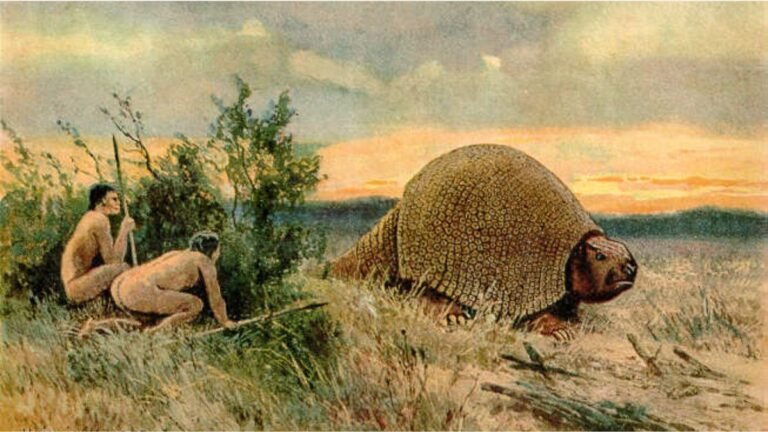The food sources paleo Indians, often referred to as the earliest humans in the Americas, led fascinating lives. These ancient people survived and thrived in harsh environments using diverse strategies, and a key part of their success was their food sources. Understanding the foods they relied on not only offers a window into their lives but also helps modern-day researchers learn more about early human migration, adaptation, and survival tactics.
In this article, we explore the primary food sources of Paleo Indians, their hunting and gathering techniques, and how their diet shaped the development of early human societies in the Americas. We will also include a detailed comparison chart to illustrate these food sources and their nutritional benefits. By the end of this article, you’ll have a clearer understanding of what Paleo Indians ate and how these foods contributed to their survival.
The Role of Food in Paleo Indian Culture
Before diving into specific food sources, it’s important to consider the overarching role food played in Paleo Indian culture. The primary goal of any society is survival, and food was central to the Paleo Indian way of life. These early humans had to be resourceful, adaptive, and incredibly skilled in their food gathering and preparation. Paleo Indians were primarily hunters and gatherers, relying on both animals and plants for sustenance.
Their diet was influenced by several factors:
- Geography: The diverse climates and terrains of the Americas meant that food sources varied widely from region to region. For example, Paleo Indians in the Great Plains had access to vast herds of bison, while those in the Pacific Northwest relied more on seafood.
- Seasons: The availability of certain food sources depended heavily on the seasons. During winter, hunting became more critical as plant-based food was scarce, while spring and summer brought an abundance of edible plants and fruits.
- Technology and Tools: Paleo Indians used a variety of tools and weapons to hunt animals and process food, including stone tools and spears. These tools played a critical role in their ability to access and consume different food types.
- Cultural Practices: Food was not only a physical necessity but also a cultural element. Hunting rituals, food preservation methods, and communal eating all contributed to the social fabric of Paleo Indian communities.
Key Food Sources of Paleo Indians
The food sources for Paleo Indians were diverse and varied depending on where they lived, but they can broadly be categorized into two groups: animal-based foods and plant-based foods.
-
Animal-Based Foods
The Paleo Indian diet relied heavily on animal protein. Hunting large mammals was a central activity for these early humans, but they also consumed smaller animals and even marine life in coastal regions. The most notable animal-based foods in their diet include:
- a) Mammoths and Mastodons Mammoths and mastodons were among the largest creatures hunted by Paleo Indians. These massive animals provided not only meat but also hides for clothing, bones for tools, and even tusks that could be carved into weapons. Evidence of mammoth hunting has been found at archaeological sites across North America, such as the famous Clovis sites.
- b) Bison Bison were perhaps the most important animal food source for Paleo Indians in the Great Plains. These large herbivores provided a wealth of meat, which could be preserved by drying and smoking for long-term storage. Additionally, bison bones were used to craft tools and weapons, making them an essential resource for Paleo Indian communities.
- c) Deer, Elk, and Other Ungulates Deer, elk, and other ungulates were also key prey for Paleo Indians. These animals were abundant in forests and grasslands, making them easier targets for skilled hunters. These animals provided vital nutrients, including protein, fat, and essential vitamins.
- d) Small Game In addition to large mammals, Paleo Indians hunted smaller animals like rabbits, squirrels, birds, and rodents. These animals were often easier to catch and offered quick sources of nutrition.
- e) Fish and Seafood For coastal Paleo Indian groups, fish and seafood were vital. Fish like salmon, trout, and various types of shellfish provided essential nutrients and were often dried or smoked for preservation.
-
Plant-Based Foods
While animals were a major food source, Paleo Indians also relied on plants to provide necessary vitamins and minerals. These plants were gathered by women and children and formed an essential part of the diet, especially during the warmer months when animal hunting could be more challenging. Key plant-based foods included:
- a) Fruits and Berries Fruits and berries like wild strawberries, blackberries, raspberries, and cranberries were abundant in various regions. These fruits provided not only immediate sustenance but also important antioxidants, vitamins, and fiber.
- b) Nuts and Seeds Nuts like acorns, hazelnuts, and pine nuts were valuable sources of fat and protein. These foods were often harvested in large quantities, and in some regions, Paleo Indians used techniques such as grinding or roasting to make them more palatable and easier to digest.
- c) Roots and Tubers Roots and tubers such as yams, sweet potatoes, and various types of edible bulbs were commonly gathered. These foods were nutrient-dense and served as reliable sources of carbohydrates, especially in the colder months when fresh fruits and vegetables were less available.
- d) Wild Grains Wild grains, including grasses like wild rice, were harvested by Paleo Indians and served as an important source of carbohydrates. These grains could be ground into flour or eaten whole.
- e) Greens and Vegetables Wild greens such as dandelion leaves, plantain, and other edible foliage were collected for their vitamins and minerals. These were typically consumed in conjunction with meats or other more substantial food sources.
Comparison of Animal-Based vs. Plant-Based Foods for Paleo Indians
To provide a clearer comparison of the different food sources, here’s a chart outlining key nutrients and benefits of both animal-based and plant-based foods in the Paleo Indian diet:
| Food Type | Key Nutrients | Benefits | Examples |
| Animal-Based Foods | Protein, fat, vitamins B12, iron | Essential for muscle repair, energy, and immune function | Mammoths, bison, deer, fish |
| Plant-Based Foods | Carbohydrates, vitamins, fiber | Supports digestive health, boosts energy, and provides essential minerals | Berries, nuts, roots, wild grains |
Hunting and Gathering Techniques of Paleo Indians
The success of Paleo Indians in procuring food was largely due to their advanced hunting and gathering techniques. They employed a variety of strategies to catch animals and harvest plants, which were often honed over generations.
- Hunting with Spears and Atlatls Hunting large game like mammoths and bison required the use of specialized tools such as spears and atlatls (spear-throwers). These tools allowed Paleo Indians to hunt from a distance, making them more efficient in bringing down large prey.
- Trapping and Snaring For smaller game, Paleo Indians utilized traps and snares made from natural materials. These could be set to catch rabbits, squirrels, or birds, providing a steady source of food.
- Fishing Techniques In coastal regions, fishing was accomplished through a combination of nets, spears, and fish traps. For example, the use of weirs, which were stone barriers in rivers, helped trap migrating fish like salmon.
- Gathering and Preserving Plant Foods Women and children were typically responsible for gathering plant foods. These foods were often dried or smoked to extend their shelf life, allowing Paleo Indians to survive through the harsher winter months when animal food was more difficult to procure.
The Impact of Food Sources on Paleo Indian Society
The availability of food sources significantly impacted the development of Paleo Indian societies. In regions where large game was abundant, people tended to form mobile groups that followed the herds of animals. In contrast, in areas where plant foods were more plentiful, Paleo Indians may have settled in one place for longer periods.
Food also played a major role in the development of trade networks. Different groups would exchange animal products, tools, and food items, creating complex intergroup relationships across the continent.
Conclusion
The food sources of Paleo Indians were integral to their survival and development. By understanding their diets, we can gain insights into their culture, technology, and social structures. Their resourcefulness in utilizing both animal and plant-based foods allowed them to thrive in a variety of environments, and their techniques continue to inspire modern-day practices in hunting, gathering, and food preservation.
Today, the study of Paleo Indian diets offers a glimpse into the adaptability and ingenuity of these ancient peoples. As we continue to explore and uncover more about their lives, we come to appreciate the critical role that food played in shaping early human societies in the Americas.

